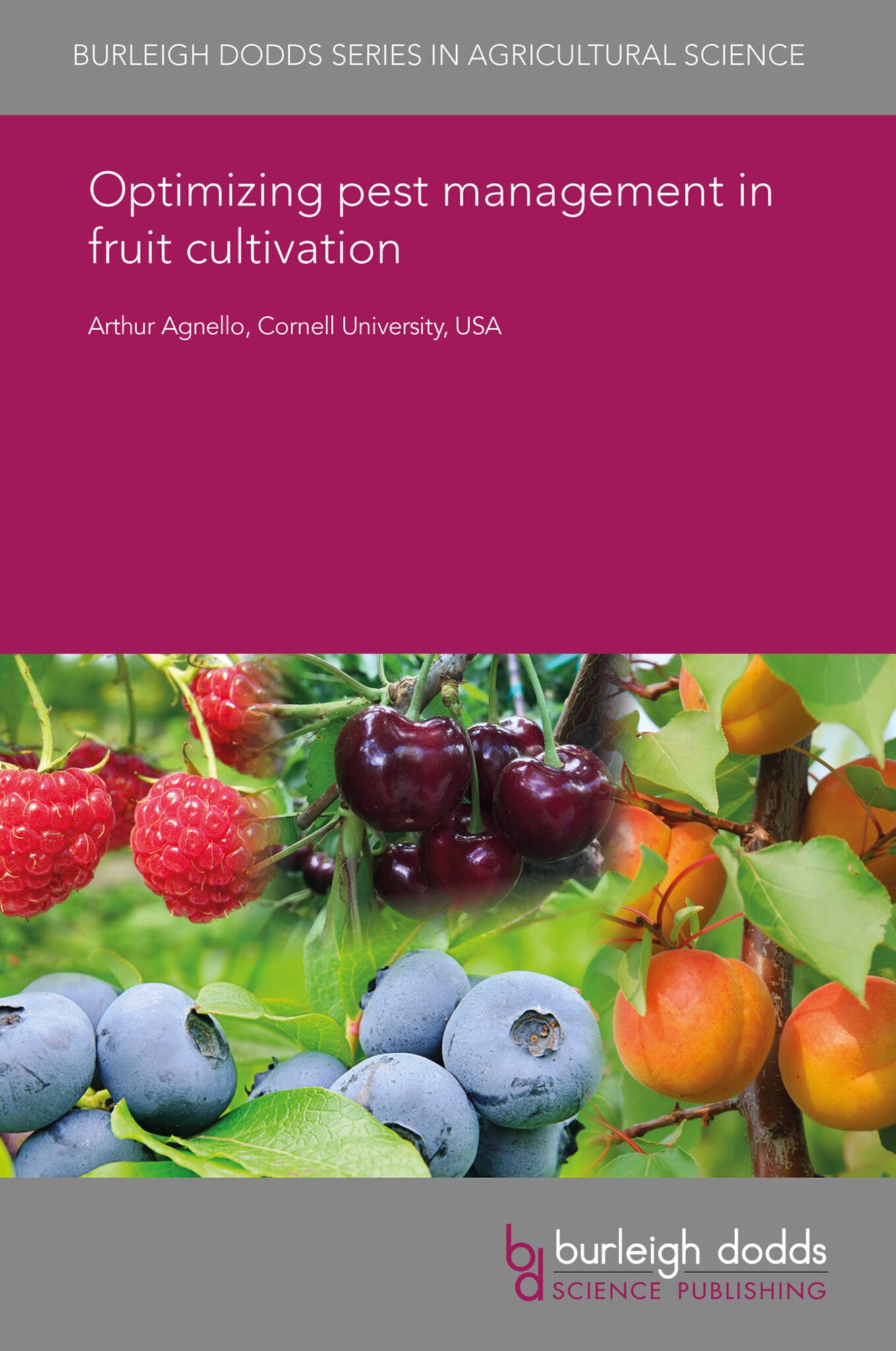We're sorry. An error has occurred
Please cancel or retry.
Optimizing pest management in fruit cultivation
Regular price
£25.00
Sale price
£25.00
Regular price
£25.00
Unit price
/
per
Sale
Sold out
Re-stocking soon
Tree fruit growers in temperate regions have faced challenges in managing the complex of arthropod pests present in these systems because of increasing pesticide regulatory restrictions, public con...
Read More

Some error occured while loading the Quick View. Please close the Quick View and try reloading the page.
Couldn't load pickup availability
- Format:
-
29 June 2019

Tree fruit growers in temperate regions have faced challenges in managing the complex of arthropod pests present in these systems because of increasing pesticide regulatory restrictions, public concerns about food safety and environmental quality, and resistance to older pesticides by key pests. Growers are attempting to adopt newer tactics such as reduced-risk (more selective) pesticides and increased reliance on sampling and monitoring techniques plus pheromone-based mating disruption, but these are more expensive and require more time and precise use patterns. In addition, most previous integrated pest management protocols were designed for management programs based on the use of older conventional pesticides. As this chapter shows, a more current and practical approach stresses a basic understanding of pest biology and development, which can be used in predictive models to support the effective use of more selective crop protectants and other sustainable tactics, such as mating disruption and biological control.

Price: £25.00
Publisher: Burleigh Dodds Science Publishing
Imprint: Burleigh Dodds Science Publishing
Series: Burleigh Dodds Series in Agricultural Science
Publication Date:
29 June 2019
ISBN: 9781838798499
Format: eBook
BISACs:
TECHNOLOGY & ENGINEERING / Agriculture / Sustainable Agriculture, Commercial horticulture, SCIENCE / Life Sciences / Horticulture, TECHNOLOGY & ENGINEERING / Agriculture / Agronomy / Crop Science, Botany and plant sciences, Sustainable agriculture, Agronomy and crop production, Pest control / plant diseases

1 Introduction 2 Arthropod biology 3 Population monitoring 4 Chemical communication 5 Organic tree fruit production 6 Case studies 7 Where to look for further information 8 References



